When Was San Grabiel Built Again When Was San Gabriel 1776

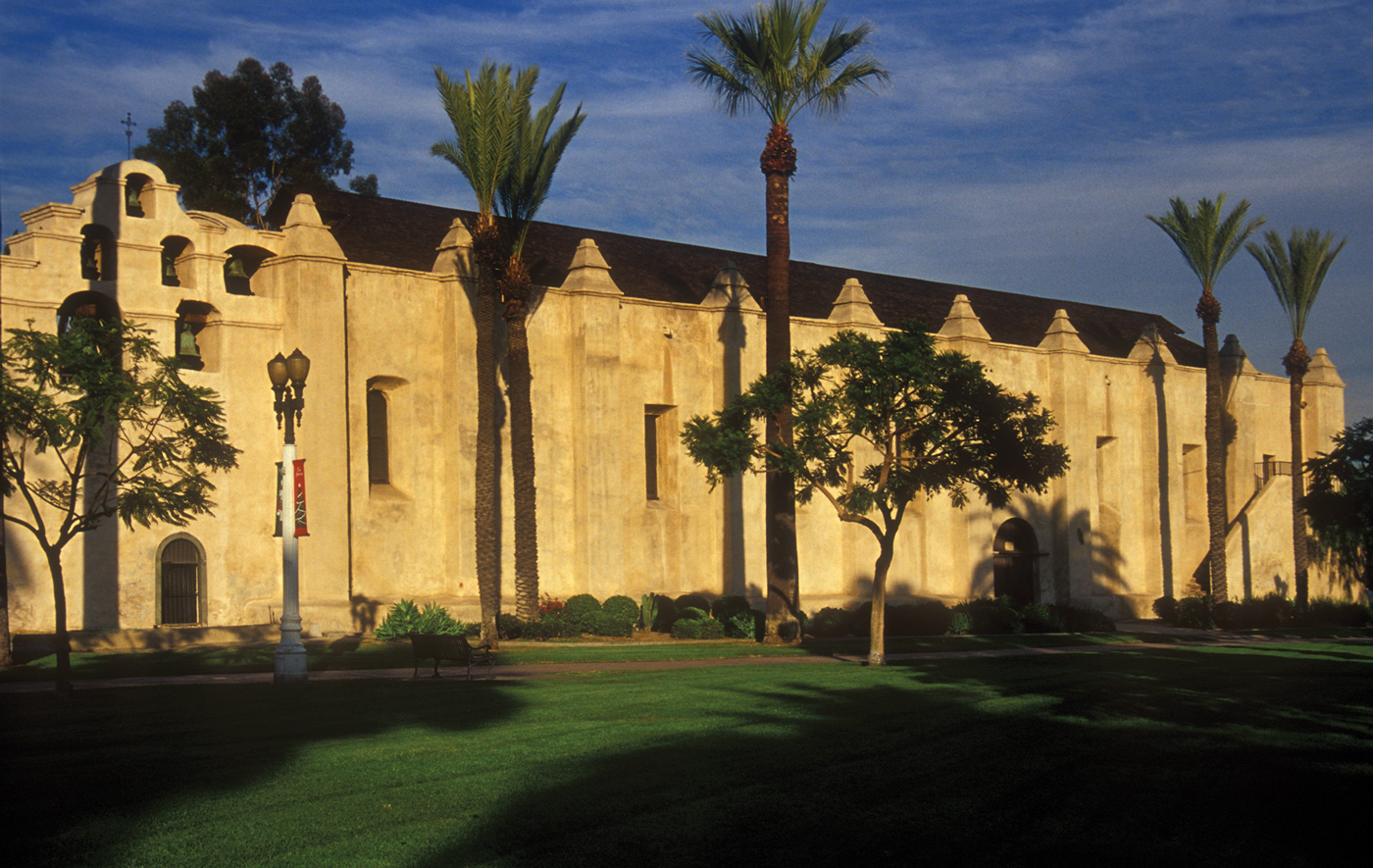
San Gabriel Arcángel
General Data
Founded:
September 8, 1771 - The fourth California Mission
Also Called:
Mission San Gabriel
Current Condition:
This is an agile Roman Catholic Church of the Archdiocese of Los Angeles.
Summary:
San Gabriel Arcángel was founded on September 8, 1771. The unique San Gabriel church building features a Moorish "fortress-like" appearance. Mission San Gabriel has a full set of the Stations of the Cross painted past mission neophytes, and a large number of artifacts and celebrated items on display on the grounds.
Address
427 S. Junipero Serra Bulldoze
San Gabriel, CA 91776
United States
Get Directions
Directions
San Gabriel is about 9 (ix) miles eastward of Los Angeles. Take I 10 due east to Exit 23B (Garfield Artery). Have Garfield Artery Southward to Mission Road East. The mission will be on the left at the juncture of Mission Route and Junípero Serra Drive.
Website(s)
Telephone(s)
626-457-3048 - Mission Gift Shop
626-467-3035 - Church building Rectory
Fees, Hours, Tours and Church building Services
Delight contact the mission directly by telephone or by visiting the mission website for the near current information.
Due to Covid-19 restrictions, it is best to cheque for current data.
Weddings and Other Special Services
Both Parishioners and not-Parishioners are welcome. Requirements, arrangements, and details on the Marriage/Weddings" sacrament tin can exist found by visiting the parish website.
Special Events
- Special events vary merely take included a History Off-white, Re-enactment of Events, a Mission Model Building Exhibit and Contest, Displays of Native Plants, as well equally others.
- Mission History Solar day is usually on the first Saturday of the month (check the mission website for authentic dates and times) in the mission's gardens or museum patio.
- In the Fall of every year, San Gabriel stages an Annual Fiesta over several days. The Fiesta features religious, historical and cultural activities, also as game and food booths, rides and gratis entertainment in the evenings.
- Tongva Indians and historical re-enactors hold special events. Details are available on the mission website.
Unique Attractions
- The unique "fortress-like" church, completed in 1805, is similar in design to the cathedral and erstwhile mosque of Córdoba, Spain.
- Mission San Gabriel has a specially picturesque espadaña or bell wall. The oldest bells were bandage in 1795.
- In the mission era the master entrance to the church was through a side door, which opened direct on to " data-gt-translate-attributes="[{"attribute":"data-cmtooltip", "format":"html"}]">El Camino Existent (Royal Route). The exterior staircase led to the choir loft.
- San Gabriel became a parish church after its
secularization in 1834 and remains an active Cosmic Church. - The Stations of the Cross are thought to be neophyte Indian paintings which date to the 1820'southward. The originals are in the mission museum with copies hanging in the church.
- The grounds of the mission are filled with displays, equipment, and objects from San Gabriel's long history. There is too a special room containing a restored mission-era kitchen.
- I of the favorites of visitors is the "wine room" which has displays of historic vino-making equipment (San Gabriel had the largest vineyard in Spanish California).
- A portion of the cemetery is set aside as burial grounds for Claretian Missionaries. This order has been responsible for San Gabriel since 1908.
Other Historic Attractions
- The missionaries from San Gabriel served the Catholic Church in the pueblo of Nuestra Señora la Reina de los Ángels del Rio de Porciúncula, founded in 1781. The Church of Our Lady of Angels has been restored.
- A visit to Former Boondocks is highly recommended.
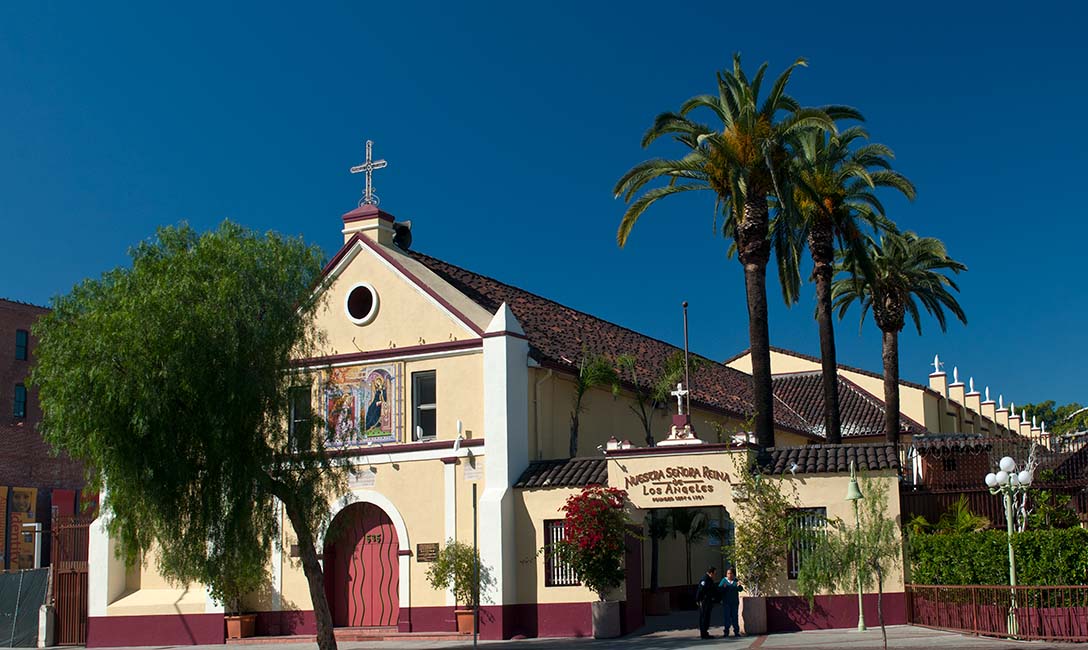
Tips for Visitors
- In that location is a minor park on the side of the church. This offers the best view of the bell tower, capped
buttresses, and alpine, narrow windows of this distinctive church. The best time to photograph the church is in the late afternoon, when the sun begins to set. - Exist certain to spend enough time in the church interior. In addition to the captivating Stations of the Cross, the altar and reredos are original and date from the 1790's; the six polychrome bultos (statues) are Spanish.
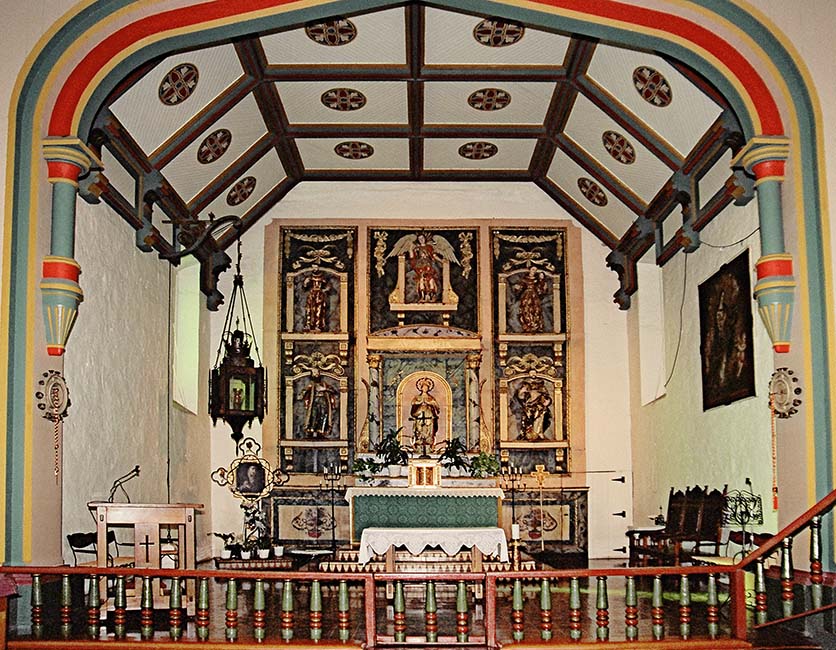
Year Secularized
1834
Year Returned to Catholic Church
1859 by Decree signed by President James Buchanan
Patron Saint (Named For)
Gabriel, Holy Prince of Archangels
Prominent Missionary Leaders
- Founding Father President - Junípero Serra, first Father President of the California missions
- Founding Missionaries - Fathers Pedro Benito Campón and Angel Fernandez Somera y Balbuena
- Prominent Missionary Leaders - Betwixt 1775 and for the side by side 28 years, Fathers Antonio Cruzado and Miguel Sánchez worked together to make this ane of the well-nigh successful of the California missions. Male parent José Zalvidea continued their piece of work for another twenty years, and is credited with introducing large-calibration viticulture to California.
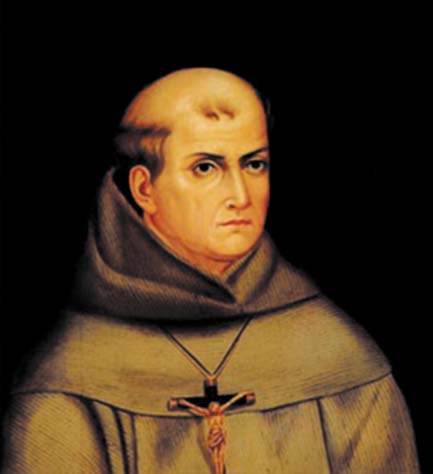
Indians Joining Mission
In the mission era, the natives who spoke one of the Cuban or Cupeño languages of the Takic family unit were called Gabrieleño afterwards the mission. Known now every bit the Tongva, the descendants were recognized as a distinct tribe past the State of California in 1994. They take sought Federal recognition for decades.
Mission Site
The mission was originally established forth the slopes of the Montebello hills at the native site of Shevaanga, overlooking the San Gabriel Valley. In 1775, the mission was relocated to the native site of Iisanchanga "about a league" (3 (3) miles) to the northwest. This mission is nine (9) miles east of downtown Los Angeles.
Mission Layout
Traditional
H2o Source
The Rio Hondo and several springs fed an channel, reservoirs, and a canal system that provided abundant water to the mission and its extensive vineyards, orchards, gardens, and mills.
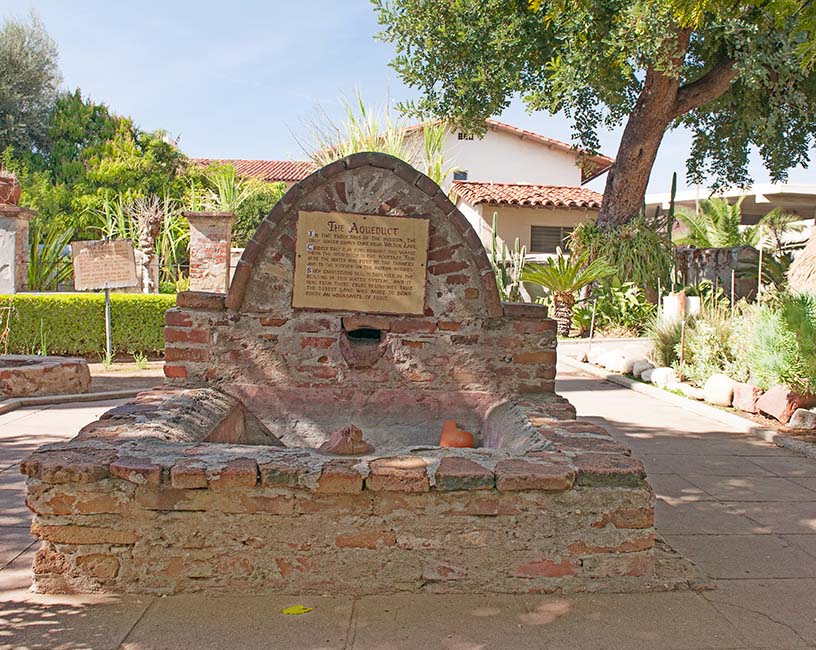
Population
Within fifteen (15) years of its founding, San Gabriel had 1,000 neophytes. The highest population recorded was 1,701 in 1817.
Livestock
Starting with only 128 animals in 1772 the mission herd reached 42,350, primarily cattle (25,000) and sheep (15,000) at its peak in 1829. Even though Mission San Gabriel was secularized in 1834 and did not go a Parish Church until 1859, the area continued to be a center for cattle and sheep ranching.
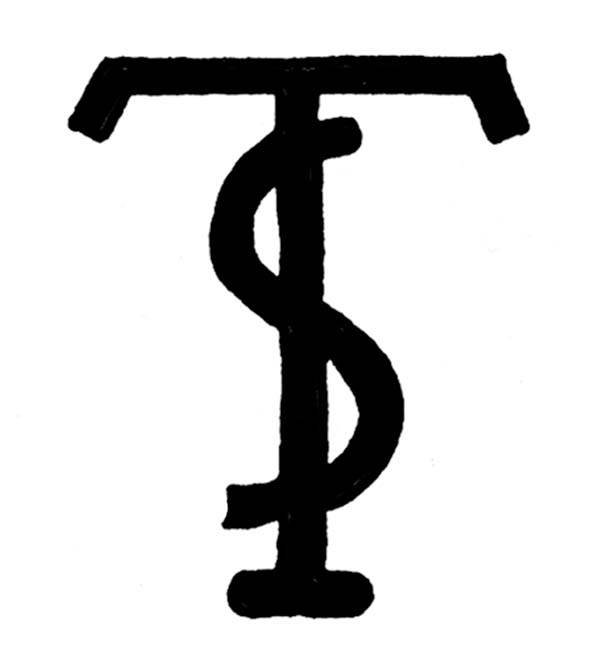
Agricultural Output
Over its active life, San Gabriel was far more productive than any other mission in California harvesting over 353,000 bushels of wheat, barley, corn, beans, peas, lentils, and garbanzos (chickpeas).
Mission Church building
The unique San Gabriel Church, completed in 1805, features a Moorish "fortress-similar" appearance with capped buttresses and long narrow windows along the prominent side wall. The style is similar to the Cathedral in Córdoba, Spain.
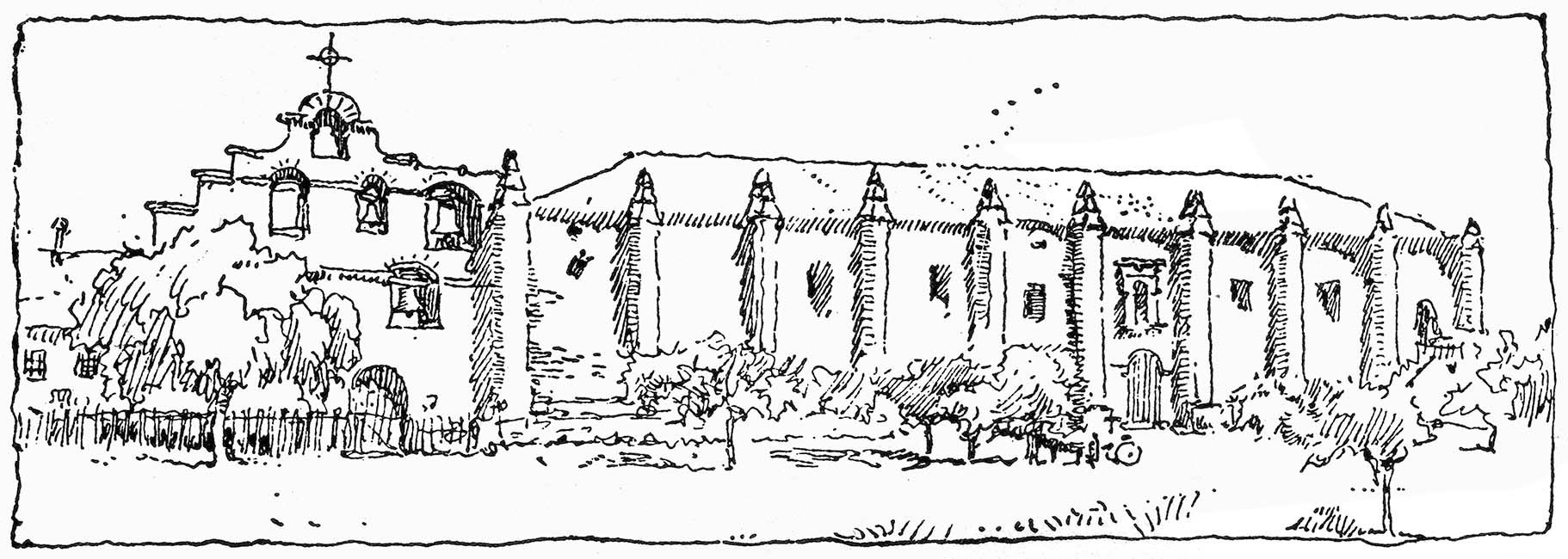
Mission Bells
Six bells occupy an espadaña or bell wall. The oldest bells were cast in Mexico City in 1795 past the famous bong maker, Paul Ruelas. The largest bell (dated 1830) weighs over a ton and was used for over a century to ring the Angelus, a prayer said at morning, noon, and evening in commemoration of the Incarnation.
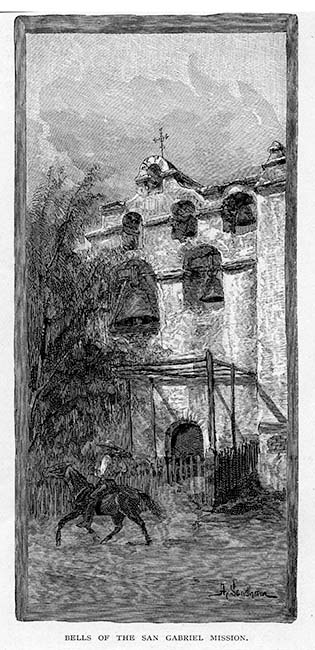
Mission Fine art and Artifacts
The Stations of the Cross are said to be authentic neophyte Indian paintings. They were exhibited at the 1893 World's Columbia Expedition in commemoration of the 400th anniversary of the discovery of the New World.
Significant Events
- On March 22, 1774 Juan Bautista de Anza, who was trailblazing an overland road from Southern Arizona to California, arrived at Mission San Gabriel enroute to Monterey. The next twelvemonth he stopped again at San Gabriel with a sizable group of colonists.
- On October 25, 1785 an armed band of Tongva Indians from six (6) or seven (seven) different villages were near to attack Mission San Gabriel merely the padres and soldiers had been tipped off. Twenty conspirators were captured, including one of the leaders, a young woman shaman named Toypurina. The Toypurina Mural in Los Angeles honors her.
- The legendary mount man, Jedediah Smith, who was the first American to reach Alta California by state in 1826, initially arrived at
Rancho de la Puente, an outpost of Mission San Gabriel. He was and then escorted to the mission where he met with Fr. Jose Sanchez.
Interesting Facts
- In 1846, what remained of the mission estate was granted to Messieurs Reid and Workman on the condition that they pay all remaining claims to the mission creditors and support the mission'south padres without obstructing community access to the church. The title granted to Reid and Workman was accounted invalid by the U.S. Land Commission in 1855, and the belongings returned to the Church in 1859.
- San Gabriel was located astride three prominent trails. Settlers, war machine expeditions, and travelers often stayed at this mission, which had turbulent relations with the Native Americans because of the large military presence.
- San Gabriel had the largest vineyard in Castilian California and was the botanical source of many of the vines planted in the other missions in the chain. The area became an important center for wine in the 1880'due south.
- Missionaries from San Gabriel guided the development of the Church of our Lady of the Angels at the pueblo (boondocks) of Nuestra Señora la Reina de Los Angeles, founded in 1781. This historic structure has been restored.
For Additional Data
- McGinty, A. (2001). Mission San Gabriel Arcángel. (PowerKids Press serial on the Missions of California)
- Sugranes, Eastward. (1921). The History of Mission San Gabriel
- Engelhardt, Z. (1927). San Gabriel, and the Beginnings of Los Angeles. (The definitive early on history of the "The Pride of the Missions")
Historical Gallery
Mission San Gabriel'southward unique church, featuring a Moorish "fortress-similar" advent, was completed in 1805. The mission was never abandoned and became a parish church after it was secularized in 1834.
The Historical Image Gallery features historic illustrations, of import paintings, as well every bit drawings of events that took place at this crossroads mission. The missionaries at San Gabriel guided the evolution of the parish church building in the pueblo of Los Angeles, 9 (9) miles distant.
Gimmicky Gallery
The Contemporary Image Gallery contains more than recent photographs taken by several unlike photographers from around the Church gardens and the Church interior.
Architectural Gallery
Source: https://www.missionscalifornia.com/missions/san-gabriel-arcangel/
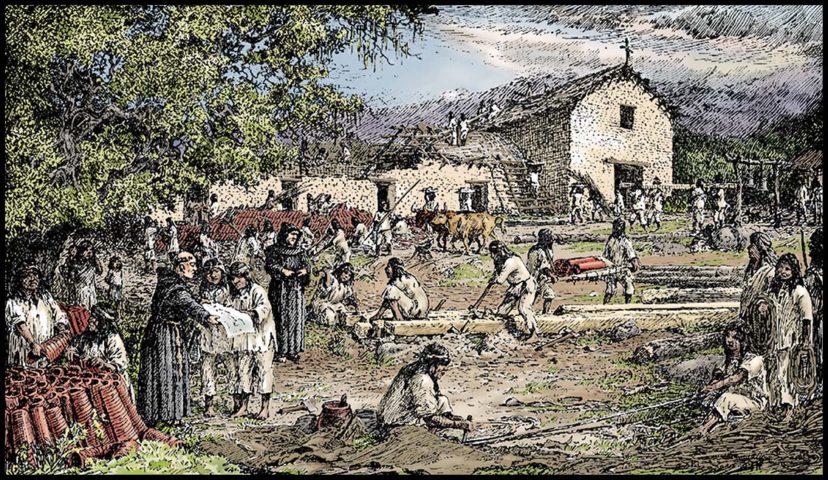
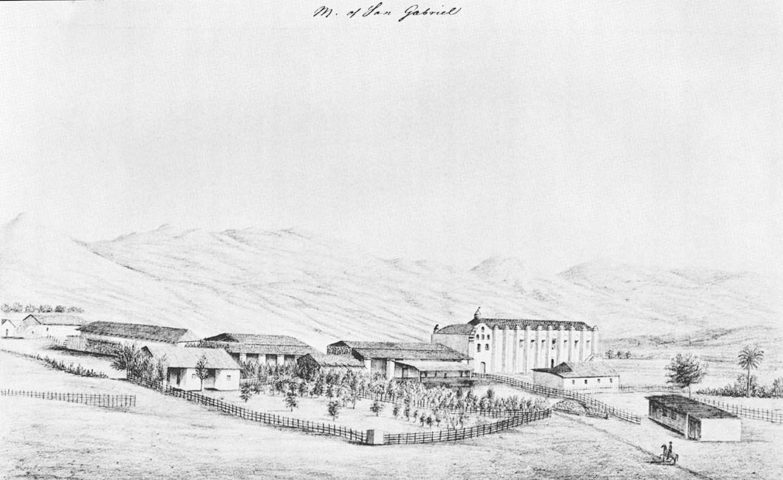
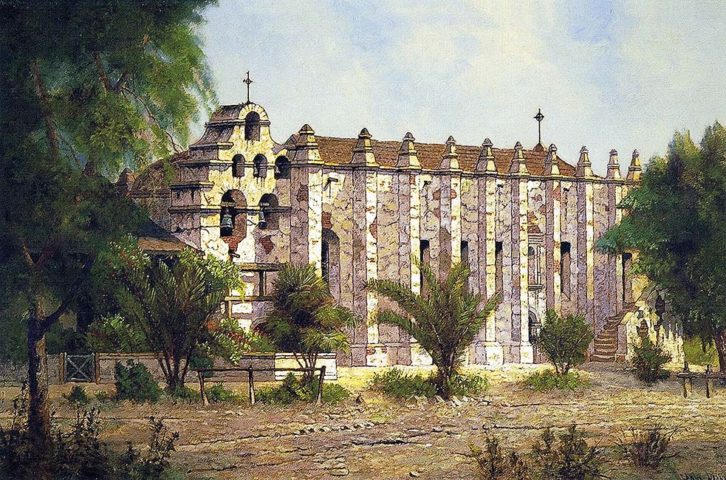
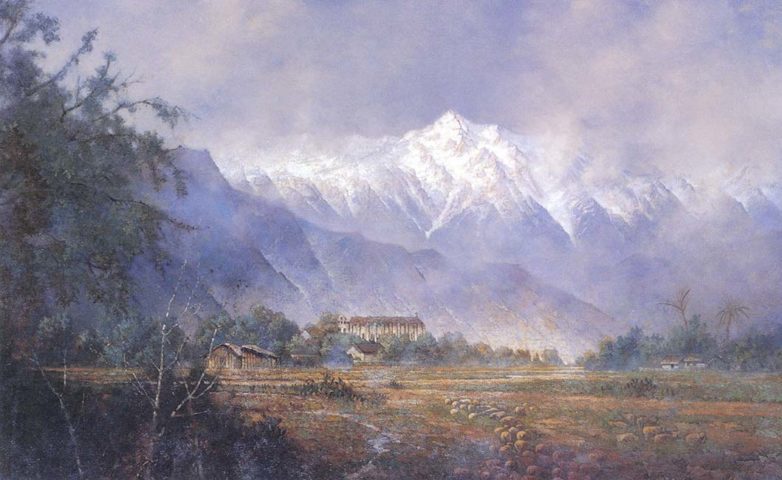
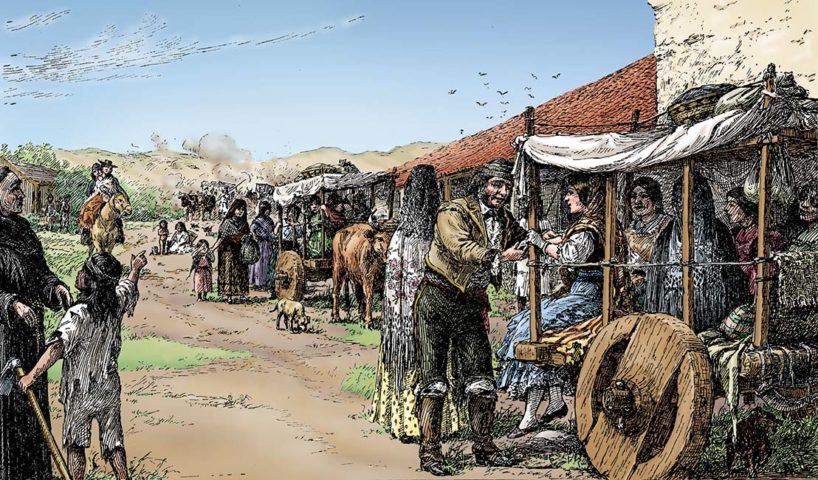
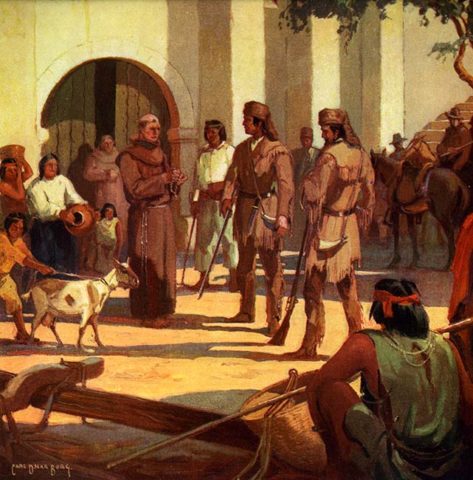
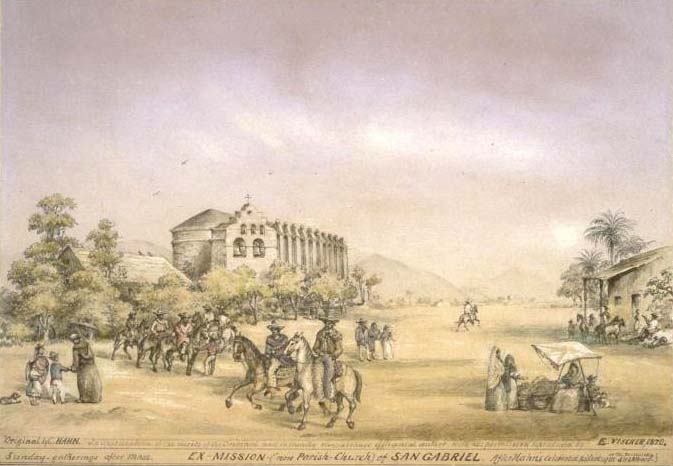
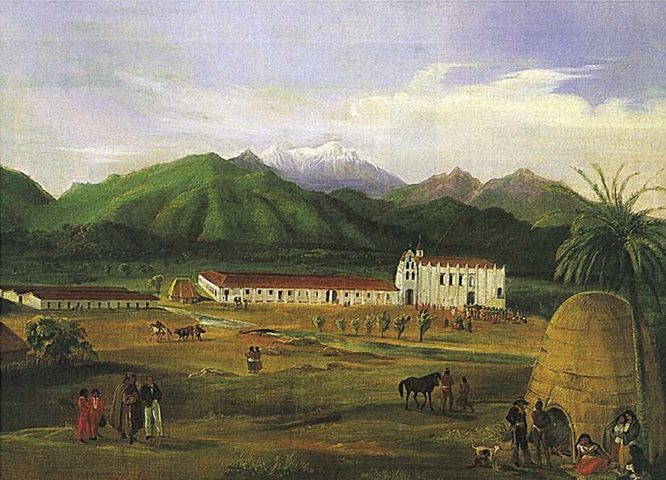
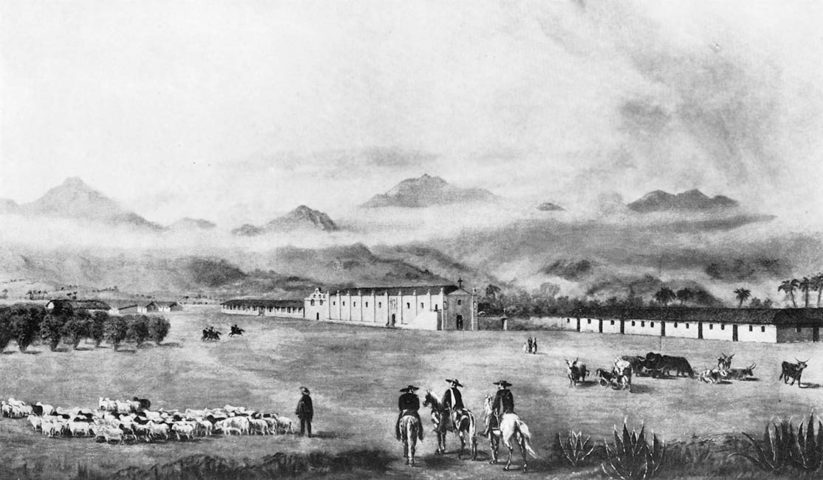
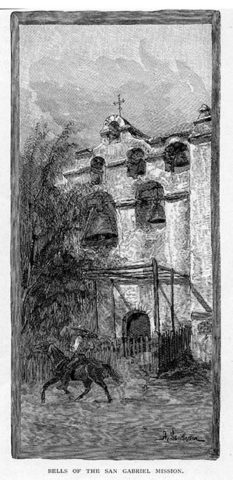
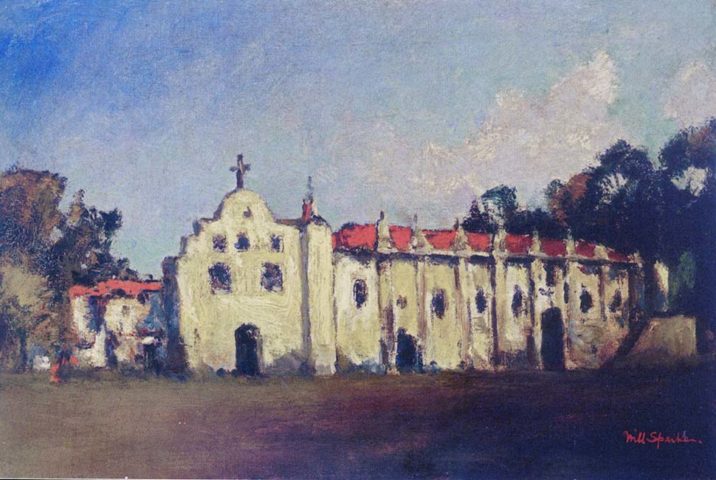
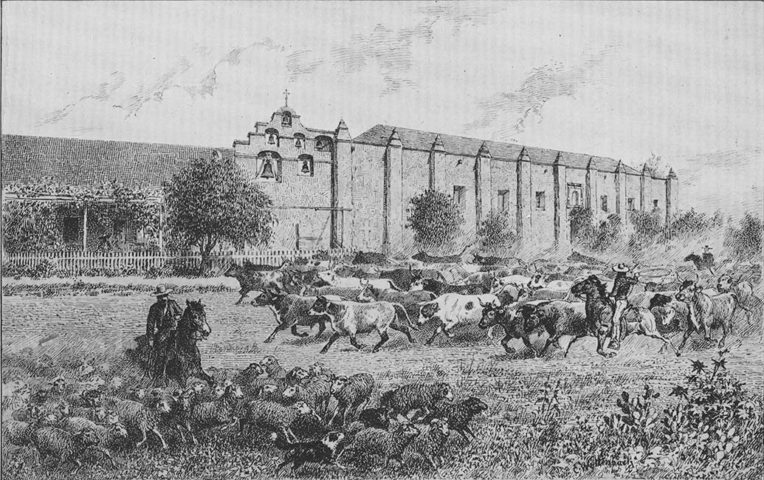
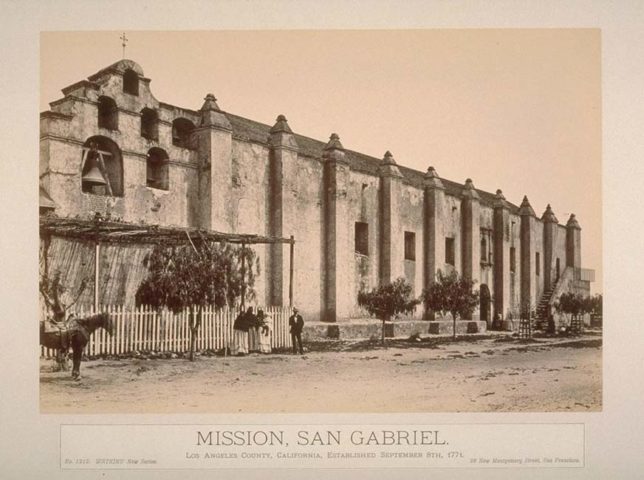
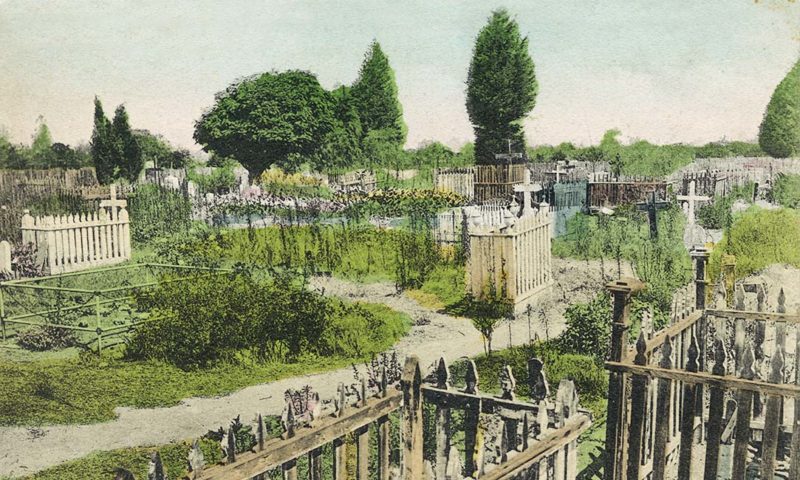
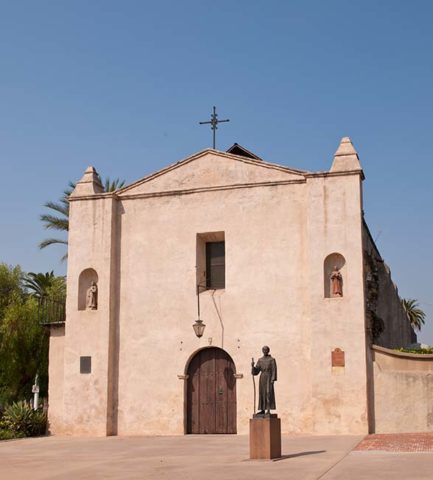
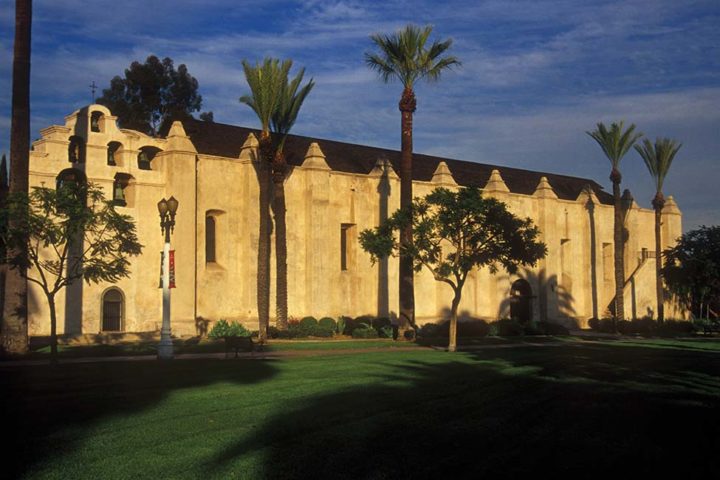
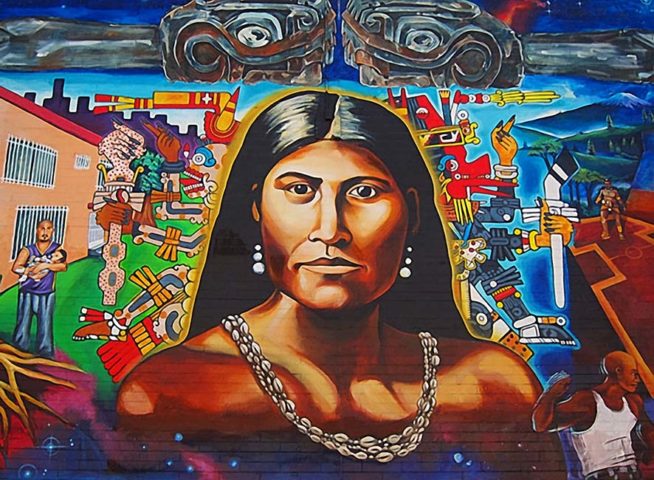
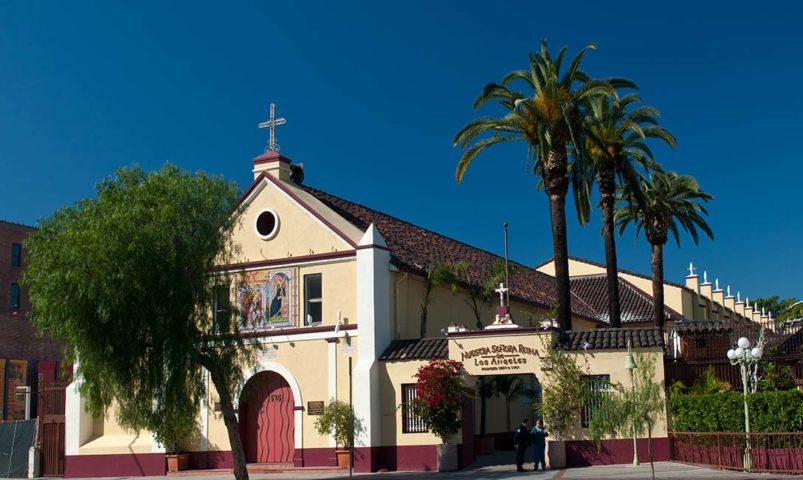
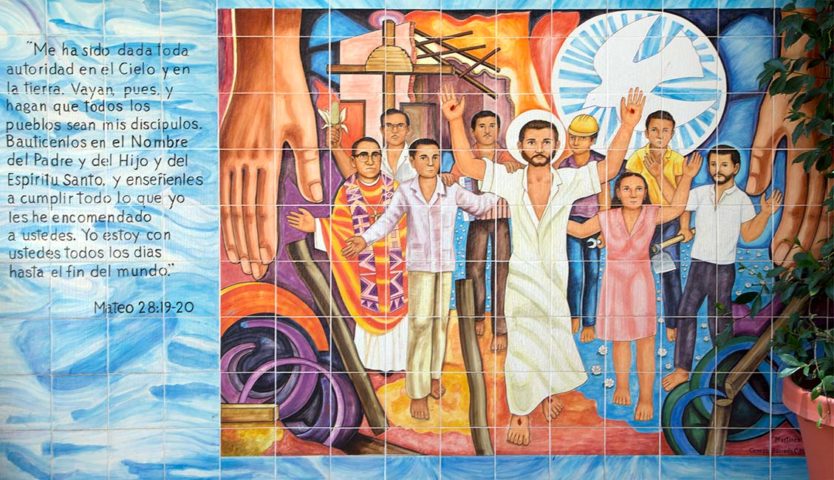
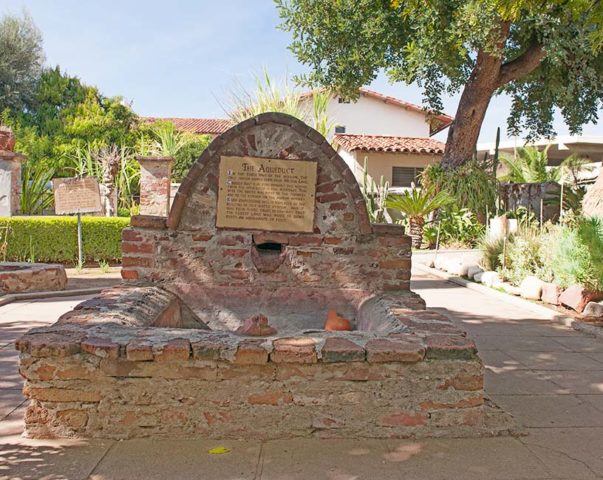
0 Response to "When Was San Grabiel Built Again When Was San Gabriel 1776"
Post a Comment